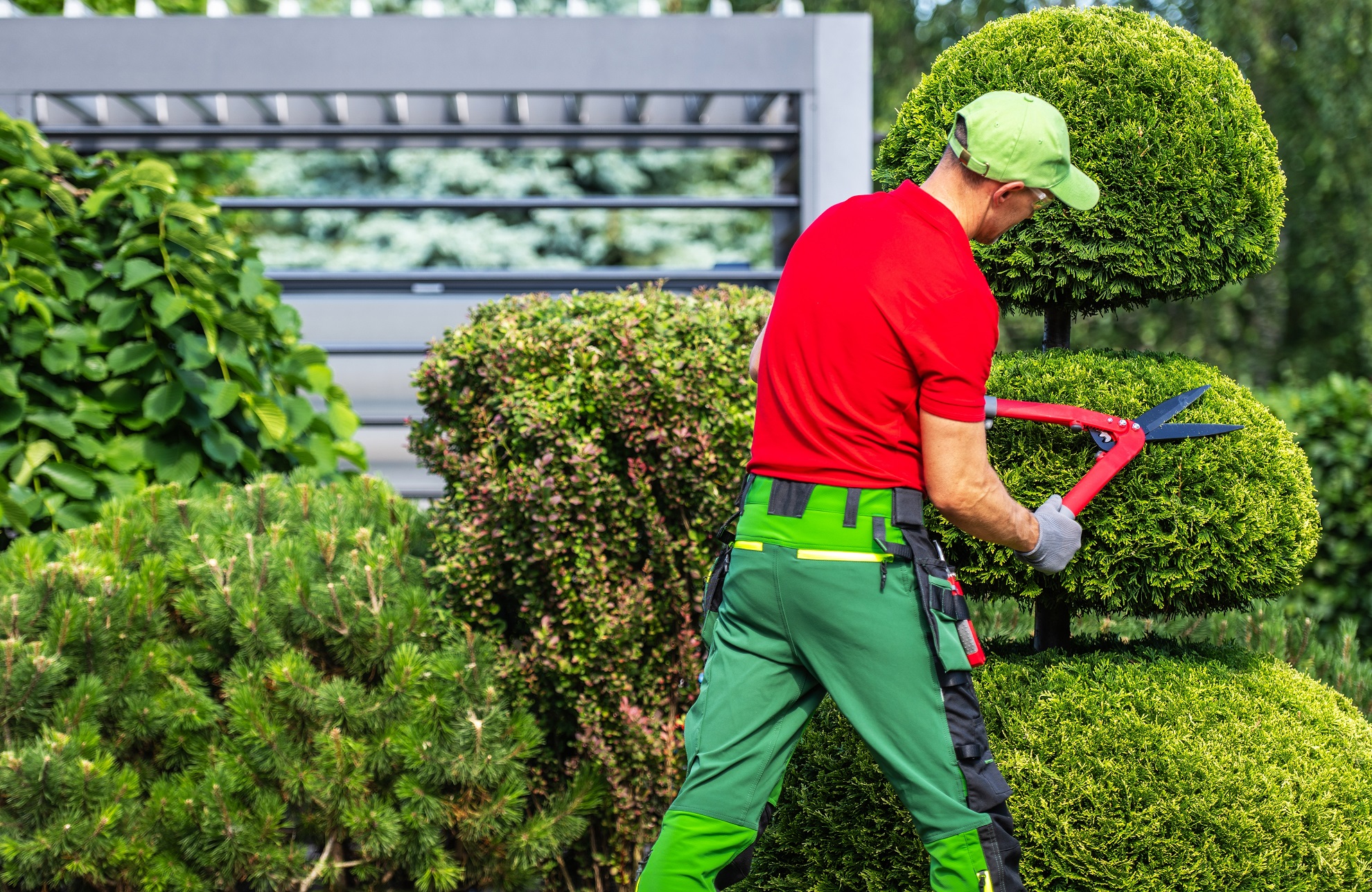
Healthy trees do more than beautify your property—they also provide shade, improve air quality, and increase curb appeal. But to get the most out of your trees, regular maintenance is a must. That’s where trimming and pruning come in. While many people use these terms interchangeably, they serve very different purposes. At Blooms Landcare, we specialize in professional tree care that includes both trimming and pruning. This guide breaks down the differences between the two, how they benefit your trees, and when to schedule each service.
What Is Tree Trimming?
Tree trimming is a landscaping practice that focuses on maintaining the shape, size, and appearance of trees and shrubs. It’s typically performed to enhance a tree’s visual appeal and to control overgrowth that can block sunlight or crowd other plants.
Top Reasons for Tree Trimming:
- Shape and Symmetry – Trimming helps trees maintain a balanced, attractive form.
- Improved Sunlight Penetration – Reduces dense foliage that may block light for other landscape features.
- Prevent Property Damage – Keeps branches from scraping roofs, fences, power lines, or walkways.
- Safety – Reduces risk from weak or hanging branches that could fall.
Tree trimming is often scheduled once or twice a year, depending on the species and growth rate. For ornamental trees and shrubs, trimming may be more frequent to preserve shape.
What Is Tree Pruning?
Tree pruning involves selectively removing dead, diseased, or structurally unsound branches to improve overall tree health and longevity. Unlike trimming, which is mostly cosmetic, pruning is a vital part of a tree’s health maintenance.
Core Benefits of Tree Pruning:
- Disease Prevention – Removes infected limbs to stop the spread of fungi or pests.
- Structural Stability – Eliminates weak or crossing limbs that may cause internal stress or instability.
- Improved Airflow and Light – Enhances internal canopy circulation, reducing mildew and fungus growth.
- Boosts Fruit and Flower Production – Encourages better yield in flowering or fruit-bearing trees.
Pruning is best performed during a tree’s dormant season (late winter to early spring), when the structure is clearly visible and the risk of shock is minimized.
Risks of Incorrect Tree Pruning
Pruning may seem straightforward, but when done improperly, it can actually do more harm than good. Cutting too much or making the wrong cuts can stress a tree, slowing its growth or making it vulnerable to pests and disease. In severe cases, excessive or poorly timed pruning may weaken the tree so much that it struggles to recover—or doesn’t survive at all.
Proper technique and timing are crucial to boost tree vitality while avoiding setbacks.
Key Differences: Tree Trimming vs. Tree Pruning
| Category | Tree Trimming | Tree Pruning |
| Purpose | Shape, size, aesthetics | Health, safety, and structure |
| Frequency | 1–2 times per year | Annually or as needed |
| Tools Used | Hedge trimmers, hand shears | Hand saws, pole pruners, loppers |
| Best Time | Spring and summer | Late winter or early spring |
| Typical Applications | Hedges, ornamental shrubs, shade trees | Mature trees, fruit trees, diseased limbs |
Best Times for Tree Pruning
- Late winter to early spring for most trees
- Immediately after spotting diseased or dead branches
- During dormant seasons to prevent unnecessary stress on trees
The ideal time to prune depends on the type of tree you’re tending. Spring-flowering trees are best pruned right after their blooms have faded, typically in the middle of summer. For summer-flowering varieties and most fruit trees, pruning during the winter or early spring is recommended, while the tree is still dormant. This timing helps encourage healthy growth when the weather warms up and minimizes stress. Always remove damaged or diseased branches as soon as you notice them, no matter the season.
Tree Species in Fort Worth That Benefit from Trimming or Pruning
Fort Worth’s climate supports a wide range of tree species, each with unique maintenance needs:
- Live Oaks – Prone to overcrowded canopies; pruning improves airflow.
- Cedar Elms – Benefit from annual pruning to remove deadwood.
- Bald Cypress – Requires removal of base sprouts and suckers.
- Bradford Pear – Structurally weak; early pruning reduces risk of splitting.
- Crape Myrtles – Should be pruned lightly after bloom; avoid aggressive topping.
Common Tree Care Mistakes to Avoid
Proper technique and timing are critical. Avoid the following pitfalls:
- Topping – Severely damages the tree and leads to weak, unsightly regrowth.
- Over-pruning – Removes too much foliage, stressing the tree.
- Improper Timing – Pruning during active growth can delay recovery.
- Using Dull Tools – Creates ragged cuts that invite disease.
- Ignoring Tree Species Needs – Different species require specific techniques and timing.
Tree Care by Season in Fort Worth
Winter: Ideal for pruning deciduous trees during dormancy.
Spring: Great for trimming flowering trees after blossoms fade.
Summer: Use caution—only remove dangerous or dead limbs during high heat.
Fall: Generally not ideal for pruning; trees are preparing for dormancy and cuts may not heal properly.
DIY vs. Professional Tree Services
While homeowners can handle light trimming for small shrubs or young trees, pruning large trees or addressing structural concerns requires professional expertise. Improper cuts can lead to decay, disease, and even tree loss.
Why hire professionals like Blooms Landcare?
- Certified arborists and trained technicians
- Proper equipment for safe, clean cuts
- Expertise with native Texas species
- Adherence to HOA, municipal, and safety guidelines
Long-Term Benefits of Professional Tree Care
Investing in professional trimming and pruning from Blooms Landcare can:
- Extend Tree Life – Prevents disease and promotes strong growth.
- Improve Property Safety – Reduces risks of falling limbs or structural damage.
- Increase Property Value – Well-maintained trees can add up to 15% to a home’s value.
- Reduce Utility Bills – Properly trimmed shade trees can lower cooling costs by up to 25%.
(Source: U.S. Department of Energy – Landscaping for Energy Efficiency)
Why Fort Worth Property Owners Trust Blooms Landcare
Since 2006, Blooms Landcare has helped homeowners and commercial property managers across Fort Worth create and maintain vibrant, healthy landscapes. Our services go beyond tree care. We offer:
- Custom landscape design and construction
- Artificial turf installation for low-maintenance beauty
- Ongoing lawn care and seasonal cleanups
- Irrigation and drainage solutions for Texas weather
Transform Your Fort Worth Yard with Blooms Landcare
Let the experts at Blooms Landcare keep your trees healthy, beautiful, and safe. From targeted pruning to seasonal trimming and comprehensive landscape care, we help Fort Worth property owners protect and enhance their outdoor spaces. Call us at 817-688-5352 today to schedule a consultation.
